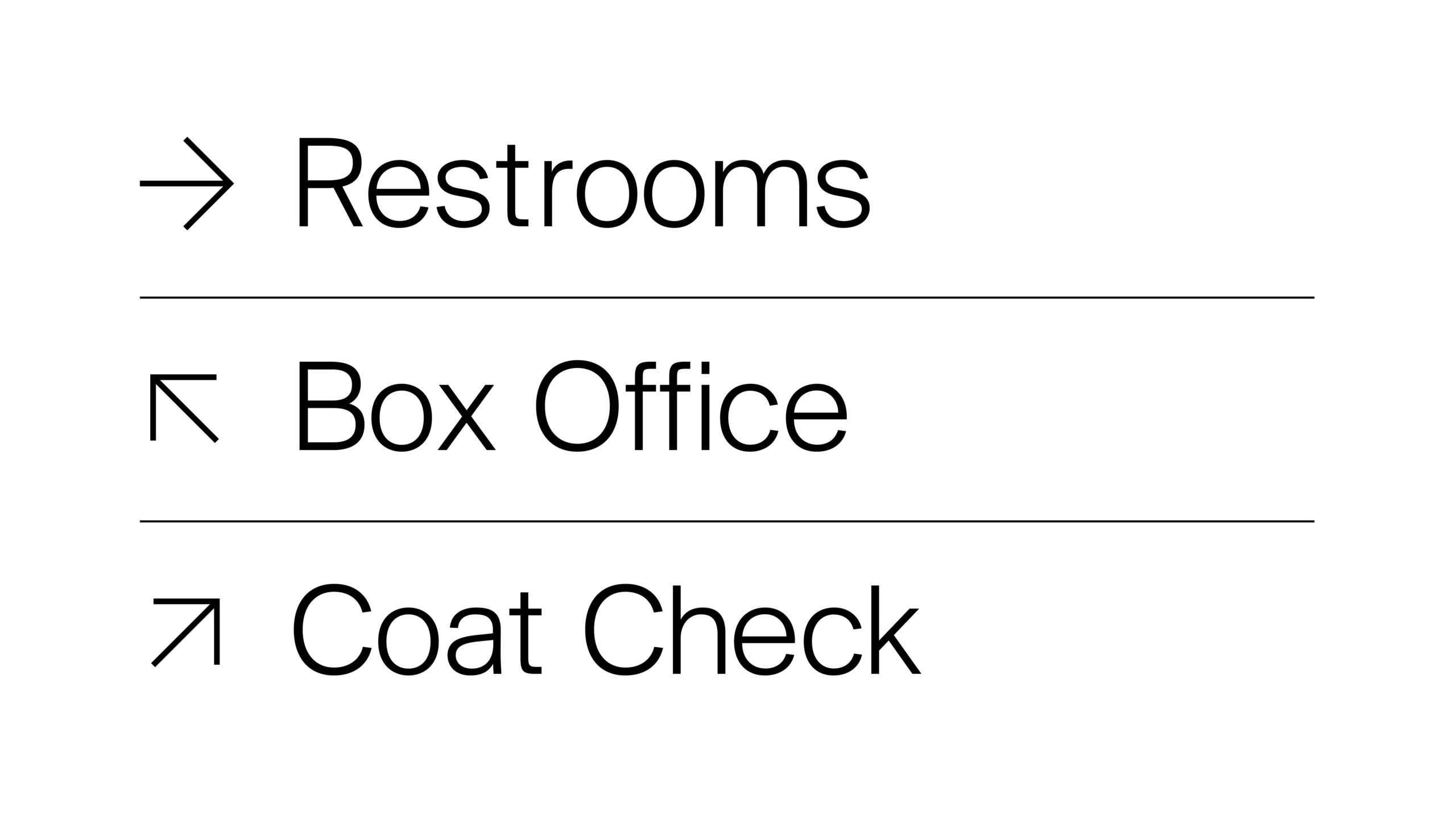Terminal 5 - Connections And Command Lines
Table of Contents
- Unpacking the Idea of Terminal 5
- What Makes JFK's Terminal 5 a Key Hub?
- Navigating Heathrow Terminal 5 - How Do You Find Your Way?
- Terminal 5 New York City - A Venue with a Beat?
- Beyond the Physical Space - What Exactly is a Terminal?
- Handy Commands for Your Terminal 5 Window
- Managing Files and Data in Your Terminal 5
- Understanding the Terminal 5 Interface and Its Power
When you hear "Terminal 5," what comes to mind? For many, it immediately paints a picture of bustling airports, the excitement of upcoming trips, or perhaps the relief of arriving home. It's a place where countless stories begin and end, a spot where people connect with different parts of the world, or even just another city. This specific designation, "Terminal 5," appears in various places, each with its own unique purpose and rhythm, shaping experiences for a whole lot of individuals. It's more than just a name; it’s a designation that signifies a particular kind of activity or a central gathering point for something special.
You might think of a grand airport building, like the one at New York's Kennedy Airport, a very busy spot indeed, or perhaps the sprawling complex at London Heathrow, which serves as a major gateway for travelers coming and going from the UK. These are places where planes come and go, where bags are checked, and where the air is filled with the hum of travel. But, you know, the name "Terminal 5" also pops up in some rather unexpected spots, taking on a completely different meaning and serving a distinct community, which is pretty interesting when you think about it.
And then, there's another kind of "terminal" entirely, one that doesn't involve airplanes or concert stages at all. This other kind is a virtual space, a digital window where you can actually talk directly to your computer's core workings. It's a place where words become actions, and simple typed instructions can make things happen behind the scenes. So, when we talk about "Terminal 5," it’s important to realize we're exploring a few different ideas, each with its own role in how we experience our physical and digital worlds, as a matter of fact.
What Makes JFK's Terminal 5 a Key Hub?
At New York's John F. Kennedy Airport, a truly significant spot for air travel, there's a particular building known as Terminal 5. This place is, in some respects, the heart of operations for a well-known airline, JetBlue. It serves as their main base, handling a huge number of their flights, both those that stay within the country's borders and those that take people across oceans to other nations. It’s almost like a central nervous system for their entire flight network out of the city, coordinating arrivals and departures for a vast number of people every single day.
Beyond JetBlue's extensive presence, this particular terminal also plays host to another carrier, Cape Air. This means that even smaller regional flights find a home here, connecting travelers to different destinations and adding to the overall hustle and bustle of the place. It's a really busy area, always in motion, and it certainly helps that it’s set up to manage such a wide array of air services. You can find all sorts of useful bits of information about this Terminal 5 at John F. Kennedy Airport, helping people make their way through its corridors and gates with a bit more ease.
The origins of this specific Terminal 5 date back to 2008, when it was established to support JetBlue's growing presence in New York. Since then, it has continued to be a primary location for the airline's operations, a very important piece of the puzzle for anyone flying with them to or from the city. Given the sheer volume of people passing through, travelers are often advised to arrive at the airport earlier than they might normally, just to make sure they have plenty of time to get through everything before their plane leaves. It’s a good tip, actually, for any busy travel spot.
Navigating Heathrow Terminal 5 - How Do You Find Your Way?
Shifting our focus across the Atlantic, London Heathrow Airport, a major international gateway for the United Kingdom, also has its own Terminal 5. This building is a really important part of the entire airport setup, acting as a key point of entry and exit for countless travelers making their way through the city. It’s a massive structure, designed to handle a huge volume of passengers and aircraft, and it certainly plays a big role in connecting London to the rest of the world.
Finding your way around such a vast place, like Heathrow Terminal 5, might seem a little bit overwhelming at first. But, as a matter of fact, there are resources put in place to help you out. The airport provides interactive maps that cover pretty much everything you might need to know. These maps show you where the roads are, where you can park your vehicle, and even where the various shops are located inside the terminal. They also point out the train stations and, of course, the specific departure gates you need to reach for your flight.
These tools are pretty useful for anyone trying to get their bearings in such a large and active environment. They’re designed to make the experience of moving through Heathrow, including its impressive Terminal 5, as smooth as possible. So, if you're ever there, you can rest assured that there are ways to easily figure out where you need to be, whether you're looking for a quick bite or just trying to find your way to your plane. It’s all laid out to help you out, you know.
Terminal 5 New York City - A Venue with a Beat?
Beyond the world of air travel, the name "Terminal 5" takes on a completely different meaning in New York City. Here, it refers to a well-known music venue, a place where live performances happen, located in the Hell's Kitchen area of Manhattan. You can find it at 610 West 56th Street, just west of Eleventh Avenue, a spot that, you know, tends to attract a lot of people looking for a good show. It’s a significant part of the city's vibrant music scene, offering a space for artists and audiences to come together.
This particular Terminal 5 is known for hosting a variety of musical acts, bringing different sounds and experiences to its stage. For example, there's an upcoming event featuring Clipe EarthGang at this very Terminal 5 in New York, scheduled for Thursday, August 7, 2025. The doors are set to open at 7:00 PM, with the show starting an hour later at 8:00 PM. It's a venue that often has age restrictions, and for this event, attendees need to be 16 years old or older to get in once tickets go on sale.
It's interesting how the same name can be used for such distinct purposes, from a major airport section to a lively entertainment spot. This particular site, where the music venue stands, is also situated along the base of the West Seattle Highlands on the other side of the country, which is a bit of an interesting geographical note, though not directly related to the venue itself. It just goes to show how names can echo across different contexts, each "Terminal 5" serving its own unique community and purpose, more or less.
Beyond the Physical Space - What Exactly is a Terminal?
Stepping away from the physical buildings, there's a whole other kind of "terminal" that most people interact with, often without even realizing it. This is the terminal window on your computer, a very powerful tool indeed. Think of it as your direct conversation channel with the core operating system of your device. It’s like having a special microphone and speaker that lets you give instructions directly to the computer's brain, bypassing all the pretty pictures and mouse clicks you usually use.
This digital interface usually works through something called a "shell," and most often, that shell is "bash." Basically, when you open a terminal window, you're looking at a command line. This means you type out what you want the computer to do, rather than clicking on icons or dragging things around. It's a different way of interacting, one that offers a lot of control and can be incredibly efficient once you get the hang of it, you know.
Back in earlier times, a "terminal" was literally a piece of hardware: a screen combined with a keyboard, physically connected to a larger computer system. It was the only way to interact with those big machines. Now, we mostly use "terminal emulators," which are programs that mimic those old physical terminals on our modern computers. These emulators, along with the underlying Unix tty semantics, create the complete package of what we now call a Unix terminal, which is what programs like bash usually run on. It’s a fascinating evolution, actually.
Handy Commands for Your Terminal 5 Window
So, once you're in this terminal window, what can you actually do? Well, there are some pretty basic and incredibly useful instructions you can give. For instance, if you want to change your location within the computer's file system, moving into a different folder, you use the `cd` command. That's short for "change directory." It's how you tell your computer, "Hey, I want to go into this specific place now," and it pretty much takes you there.
But what if you've gone too far, or you want to go back up to a folder that contains the one you're currently in? The `cd` command also helps you with that. There are simple ways to tell it to move you back up the organizational tree of your files. This flexibility means you can move around your computer's contents with a lot of freedom, going deeper into specific areas or pulling back to see the bigger picture, which is quite handy.
Another really common task is renaming files and folders. There's a simple command for this called `mv`, which is shortened from "move." While its primary job is to shift files and folders from one spot to another, it can also be used to rename them. The act of moving a file to the same location but with a new name is essentially how it renames things. It’s a versatile little command, actually, that you’ll probably use quite a bit if you spend time in your terminal window.
Managing Files and Data in Your Terminal 5
Sometimes, you might want to see only certain types of files, like those that are usually hidden from view in your regular graphical interface. There's a way to show just these hidden files in your terminal, which can be really useful for specific tasks or troubleshooting. This kind of question has been asked by many people over the years, with one particular query about it being posted eleven years and one month ago, and updated a year and eight months ago, gathering nearly a million views. It shows just how common this need is, you know.
Another common question involves figuring out how much space a bunch of files or a whole folder is taking up on your disk. People often look for a simple instruction to display the total amount of disk usage for all the files within a particular directory. While some attempts at finding this information might not give exactly what someone wants, there are indeed ways to get this aggregate size, helping you keep track of your storage space. It’s a very practical thing to know, especially when managing larger collections of information.
And then there's the task of copying content from one folder to another, especially if those folders are in completely different parts of your computer's directory structure. Someone might be trying to copy everything from one specific folder into another one that's located elsewhere, using the terminal. In such cases, having a clear example of the command to use can make all the difference, helping to avoid any confusion or mistakes. It’s a pretty common scenario, actually, that many people encounter when organizing their digital belongings.
Understanding the Terminal 5 Interface and Its Power
At its core, what we call a "terminal" today is really a combination of a "terminal emulator" and something called "Unix tty semantics." This pairing creates the complete environment that programs like bash, which is a very common shell, typically run within. It’s the full package that allows you to interact with your computer at a fundamental level, giving you a powerful way to issue instructions and get direct responses. It’s a bit like having a direct line to the computer's inner workings, honestly.
The command line itself is simply a particular way of communicating with a computer. Instead of pointing and clicking with a mouse, or tapping on a screen, you type out commands using your keyboard. This style of user interface is incredibly efficient for certain tasks, especially when you need to automate things or perform actions on many files at once. It might seem a little bit intimidating at first glance, but it offers a lot of precision and control once you get comfortable with it.
Beyond just managing files, the terminal can also display real-time information, like the actual network traffic your computer is currently handling, especially if you're using a wireless connection. People often wonder if it's possible to add this kind of information to a chart or a display of top processes, for example. The ability to see this kind of data live in your terminal gives you a deeper insight into what your computer is doing, allowing you to monitor its activity and understand its operations more thoroughly, which is pretty cool, really.

Terminal 5

Athletics - Terminal 5 Work

Masego – Terminal 5 – April 2, 2023 - Terminal 5 - The Bowery Presents